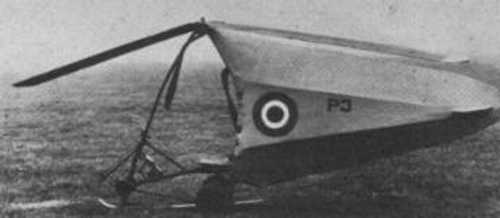
German Forces
The portable helicopter
Aggelos Photo Collection
The Hafner H.8 Rotachute was a British 1940s experimental one-man rotor kite designed by Raoul Hafner. The Rotachute was the eventual development of a concept devised by Raoul Hafner, an Austrian engineer who specialised in rotary wing design, and who had moved to the UK in 1933 to continue his research and development work. In 1940, he proposed the use of a single-place strap-on rotor kite in place of a conventional parachute, to deliver a soldier accurately to a battlefield. The proposal was made to the Air Ministry in the light of a shortage of silk for parachute manufacture. Hafner was briefly interned as an alien, but was released to pursue the feasibility of the idea at the Central Landing Establishment (CLE) located at RAF Ringway. In October 1940, work began on design and construction of rotor systems and scale models of rotor kites. The first models were made of wood and fabric, ballasted to represent a pilot, and had a rotor span of about 3 ft (0.91 m). They were tested successfully by hand launching, but suffered buffeting and lack of autorotation when launched from aircraft at height. The third evolution, designated "M.3", had metal rotor blades, and after further modifications made the first successful launch and descent from a De Havilland Tiger Moth. Further developments and tests continued into February 1941. The tenth evolution scale model (M.10) had mass-balanced wooden rotors, ballast of 100 lb (45.3 kg), and a rotor span of 10 ft (3.05 m). On 14 March 1941, the M.10 model was successfully air-launched from a Boulton & Paul.
2004 Views
9/11/2013
